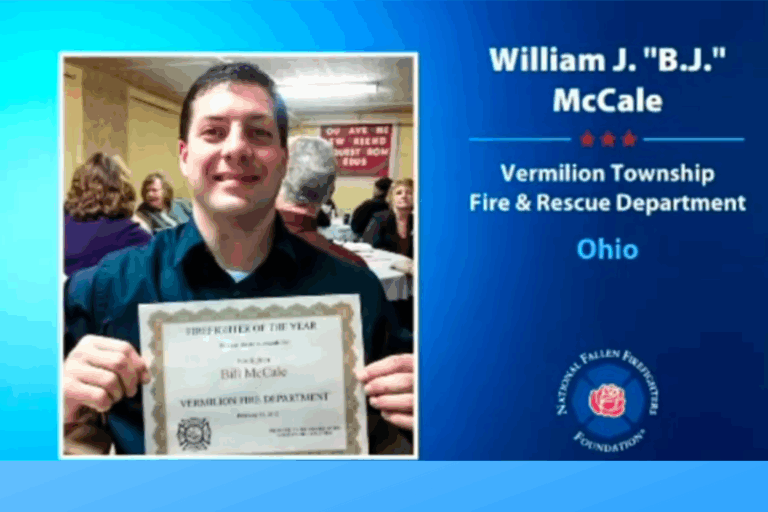
Small towns across America are facing a quiet revolution in transportation. From electric bikes and scooters to more traditional bicycles, the ways people get around are rapidly evolving. Vermilion, Ohio, is no exception. As these changes take hold, local communities must decide how to adapt their infrastructure to accommodate these new modes of transportation. The question isn’t whether change is coming—it’s how towns like Vermilion can embrace it effectively while addressing the inevitable challenges.
A Problem That’s Not Going Away
The rise of alternative transportation is undeniable. Electric bikes and scooters have grown in popularity, offering an efficient and eco-friendly way to travel. For younger generations, retirees, and tourists alike, these options are often more appealing than traditional cars. But this shift comes with complications: roads and sidewalks in small towns were designed with cars and pedestrians in mind—not a mix of traditional and alternative transportation.
Safety is a growing concern. Without dedicated bike lanes or proper signage, conflicts between cyclists, pedestrians, and vehicles are becoming more common. Additionally, as towns work toward sustainability goals, they are under increasing pressure to reduce car dependency and promote greener alternatives. Vermilion faces the same challenge as larger cities: how to balance tradition with progress.
The Positives: Why Bike-Friendly Towns Work
Investing in bike-friendly infrastructure comes with significant benefits:
- Safer Streets: Dedicated bike lanes reduce the likelihood of accidents, protecting cyclists and drivers alike. Road diets—designs that reduce car lanes to make space for bikes—also slow down traffic, making streets safer for everyone.
- Healthier Communities: Encouraging active transportation, like biking and walking, improves physical and mental health. It also provides affordable transportation options for those without cars.
- Economic Growth: Bike-friendly towns attract eco-conscious tourists and new residents. Cyclists are more likely to stop at local businesses, boosting the local economy.
- Environmental Impact: Reducing car dependency lowers pollution and carbon emissions, aligning with sustainability initiatives.
- Proactive: As electric transportation devices become more popular, towns that invest in bike-friendly infrastructure will be better prepared to accommodate these changes.
The Negatives: Pushback and Practical Challenges
Despite the benefits, making small towns bike-friendly is not without its drawbacks:
- Traffic Congestion: Reducing car lanes can lead to longer travel times for drivers. In Lorain, Ohio, residents have voiced frustration over increased traffic caused by the city’s road diet and new bike lanes.
- Short-Term Safety Risks: Changes to road layouts can be confusing for drivers and cyclists, leading to an initial spike in accidents.
- Community Resistance: Long-time residents and businesses may view bike lanes as disruptive. They fear reduced vehicle access could hurt revenue, and some drivers feel their needs are being deprioritized.
- Financial Strain: Building and maintaining bike infrastructure is expensive. Small towns like Vermilion must weigh these costs against other priorities.
- Equity Concerns: Not all residents benefit equally. Those living in rural or car-dependent areas may feel left out of bike-friendly initiatives.
- Impact on Emergency Services: Narrower roads can complicate access for emergency vehicles, raising safety concerns.
Case Study: Lorain’s Road Diet
Lorain, a city of about 75,000 residents, offers valuable lessons for Vermilion. The city implemented a road diet along West Erie Avenue, reducing car lanes to make room for bike lanes. Advocates praised the project for improving safety and encouraging cycling. However, it also faced significant criticism. Some residents reported increased traffic congestion and claimed the changes caused more accidents than they prevented.
Lorain’s experience highlights the importance of careful planning and community engagement. While the long-term benefits may outweigh the drawbacks, the transition can be difficult without proper communication and infrastructure design.
Finding the Balance: What Vermilion Can Learn
Vermilion has the opportunity to learn from towns like Lorain and tailor its approach to meet the unique needs of its community.
- Community Engagement: Public input is crucial. Town halls and surveys can help address concerns and ensure that residents feel heard.
- Phased Implementation: Starting with pilot projects allows the town to test bike lanes and gather data before committing to permanent changes.
- Safety First: Well-marked, separated bike lanes and clear signage are essential to prevent accidents. Lighting and maintenance should also be prioritized.
- Regulating Electric Transportation: As e-bikes and scooters grow in popularity, Vermilion should establish rules for their use, such as speed limits and designated parking areas.
- Collaboration: Partnering with local businesses and state programs can help secure funding and support for bike-friendly initiatives.
Moving Forward Together
Alternative transportation isn’t a passing trend—it’s the future. While the road to becoming a bike-friendly town is fraught with challenges, the potential benefits for safety, health, and sustainability make it worth pursuing. By learning from other communities and involving residents in the process, Vermilion can strike a balance that meets the needs of all road users.

In the end, the goal is not just to add bike lanes but to create a community where everyone—drivers, cyclists, and pedestrians—can travel safely and comfortably. With careful planning and collaboration, Vermilion can pedal into the future with confidence.





